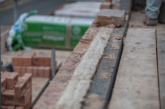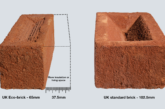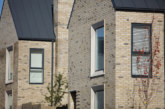 Jol Berg from Isover explains why going above and beyond the Building Regulations can give your next project the competitive edge, when it comes to acoustics and thermal performance.
Jol Berg from Isover explains why going above and beyond the Building Regulations can give your next project the competitive edge, when it comes to acoustics and thermal performance.
In recent years, studies have shown that poor acoustics and thermal performance can have a detrimental effect on a person’s health and well-being. However, despite these findings, the minimum standards outlined within the Building Regulations do not set the bar high enough – meaning many homeowners are living with less than ideal levels of airtightness and sound performance. Choosing to build above the basic requirements can greatly enhance occupants’ comfort and well-being, providing a persuasive differentiator for your development.
Take for example the basic requirement for an internal partition and intermediate floor in a home in England and Wales, as stated in Part L. This is a sound reduction index of 40 dB (Rw). At this level, normal speech made in a room can still be heard to some extent in the adjacent room. But by increasing this performance to 48 dB (Rw), even loud speech can barely be heard – which has clear benefits in modern homes, where occupants tend to have a greater number of noise sources, such as TVs, stereos and games consoles.
Warm up
With regards to the thermal performance of buildings, improving airtightness above the minimum standard will improve the overall thermal performance of the building. This, in turn, will save energy and reduce CO2 emissions and draughts, which cause discomfort.
To help educate housebuilders further on the benefits of building beyond Building Regulations, Isover has developed a range of training courses at its Technical Academy in East Leake, including an airtightness and moisture management course. Later this year, it will also launch an acoustics programme, which will start as an online CPD towards the end of 2018, before training courses begin in 2019.









